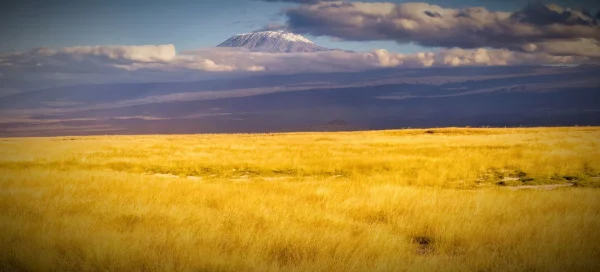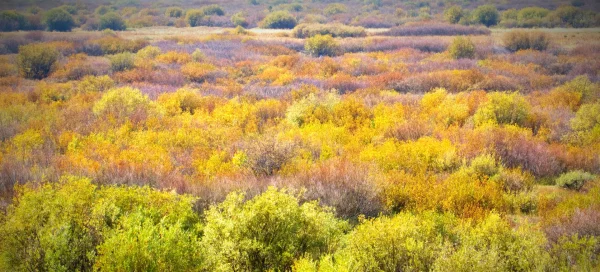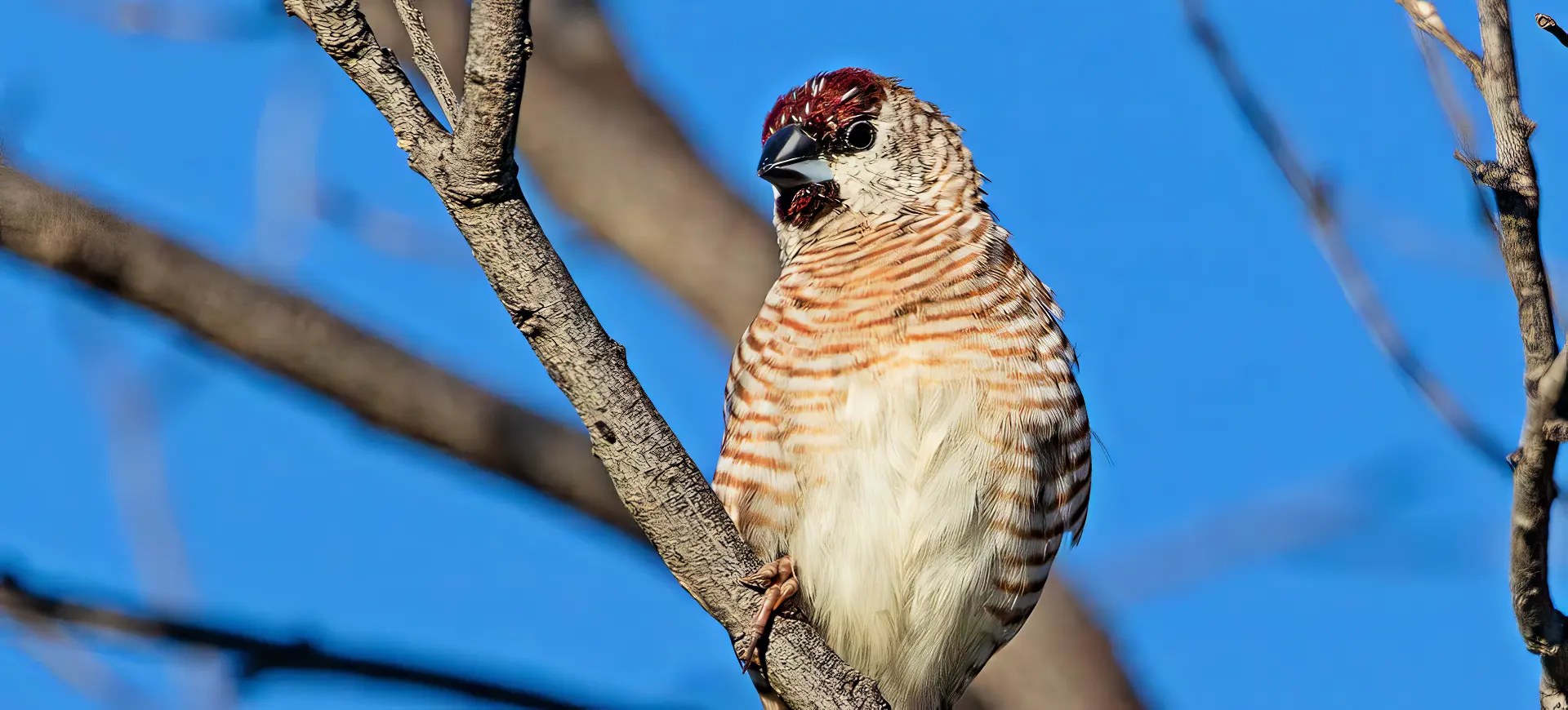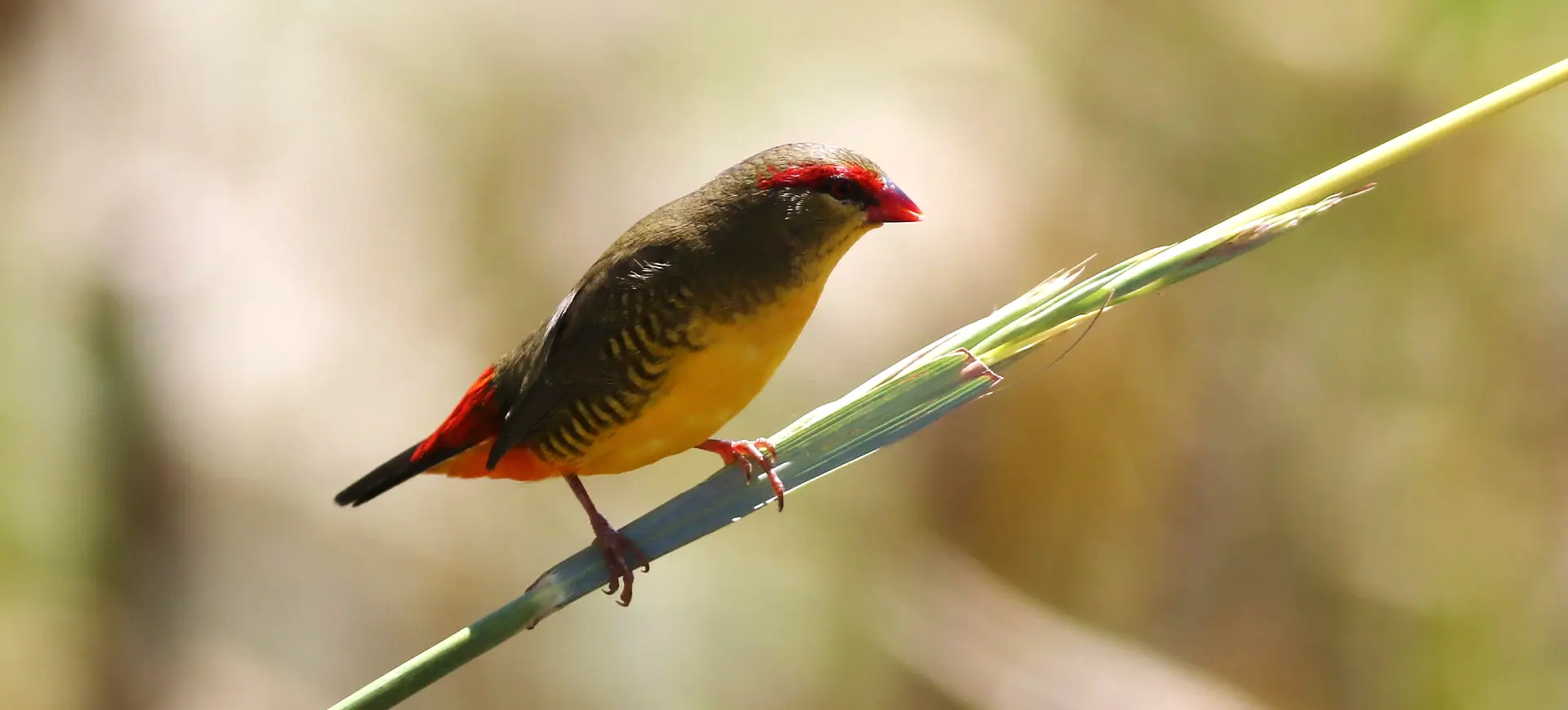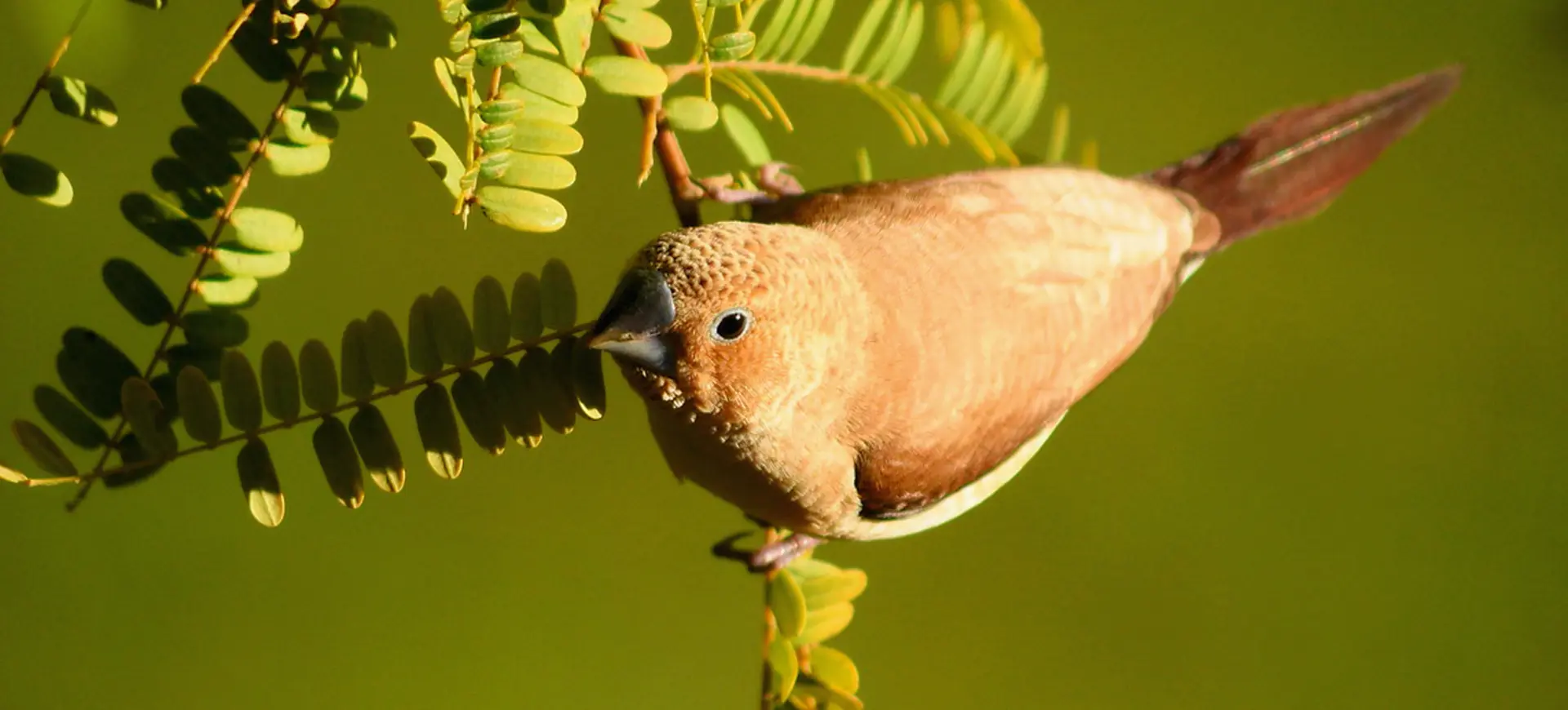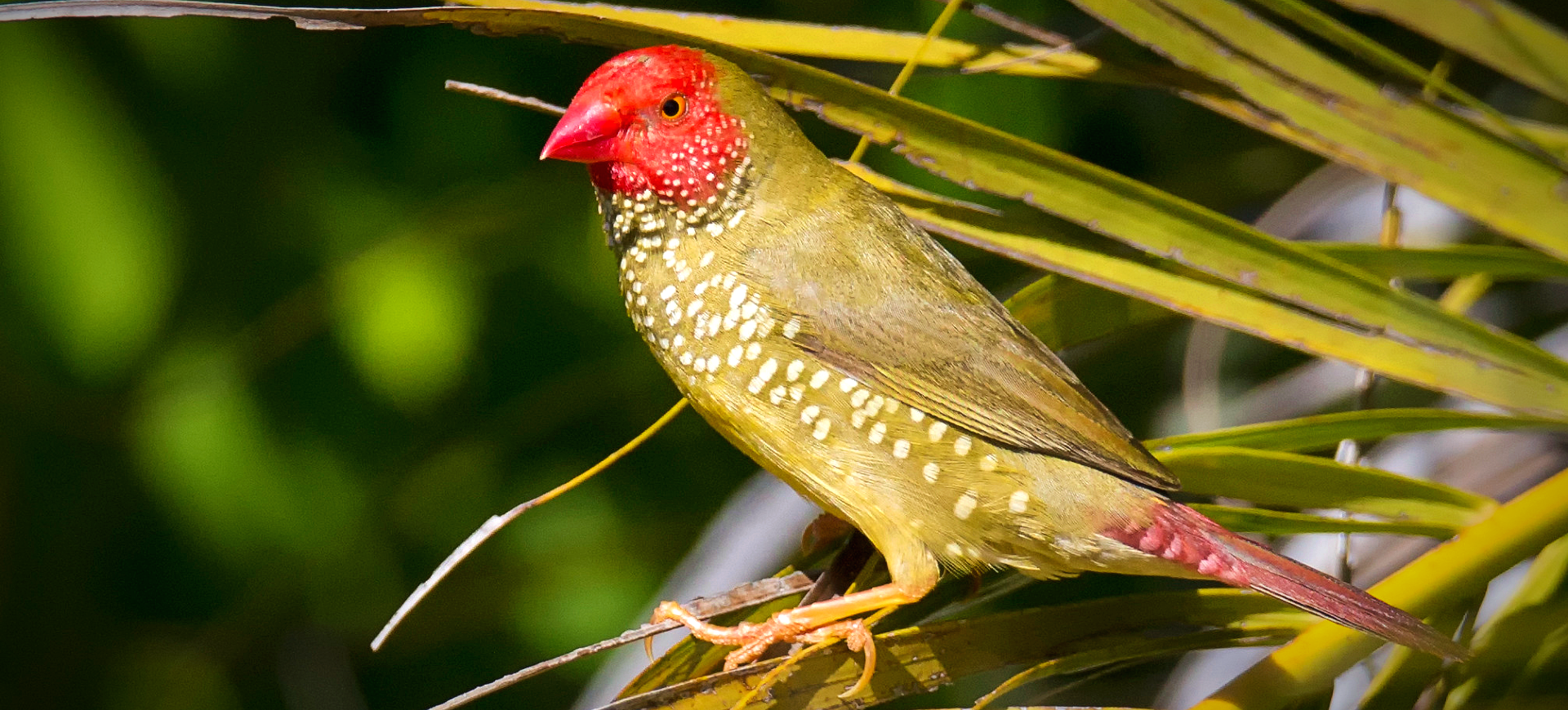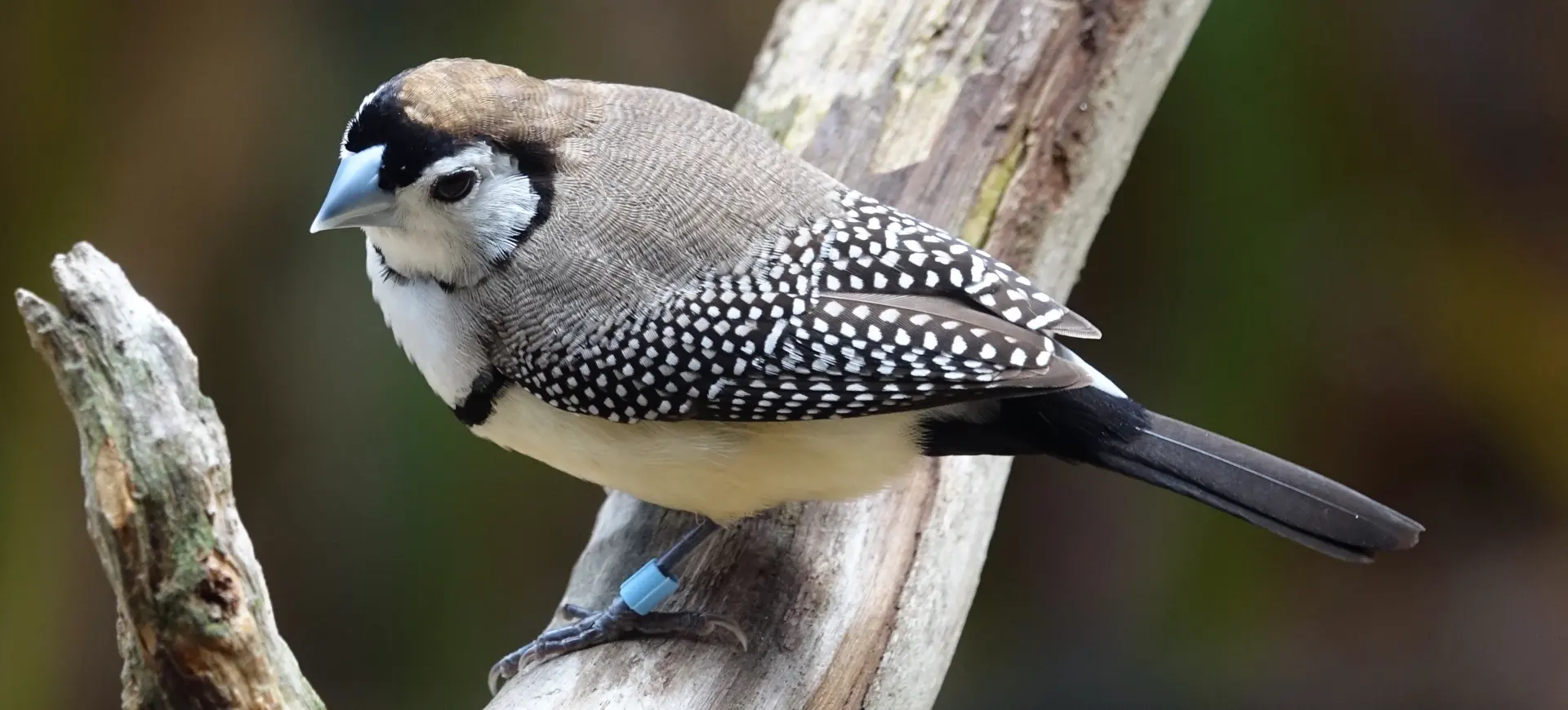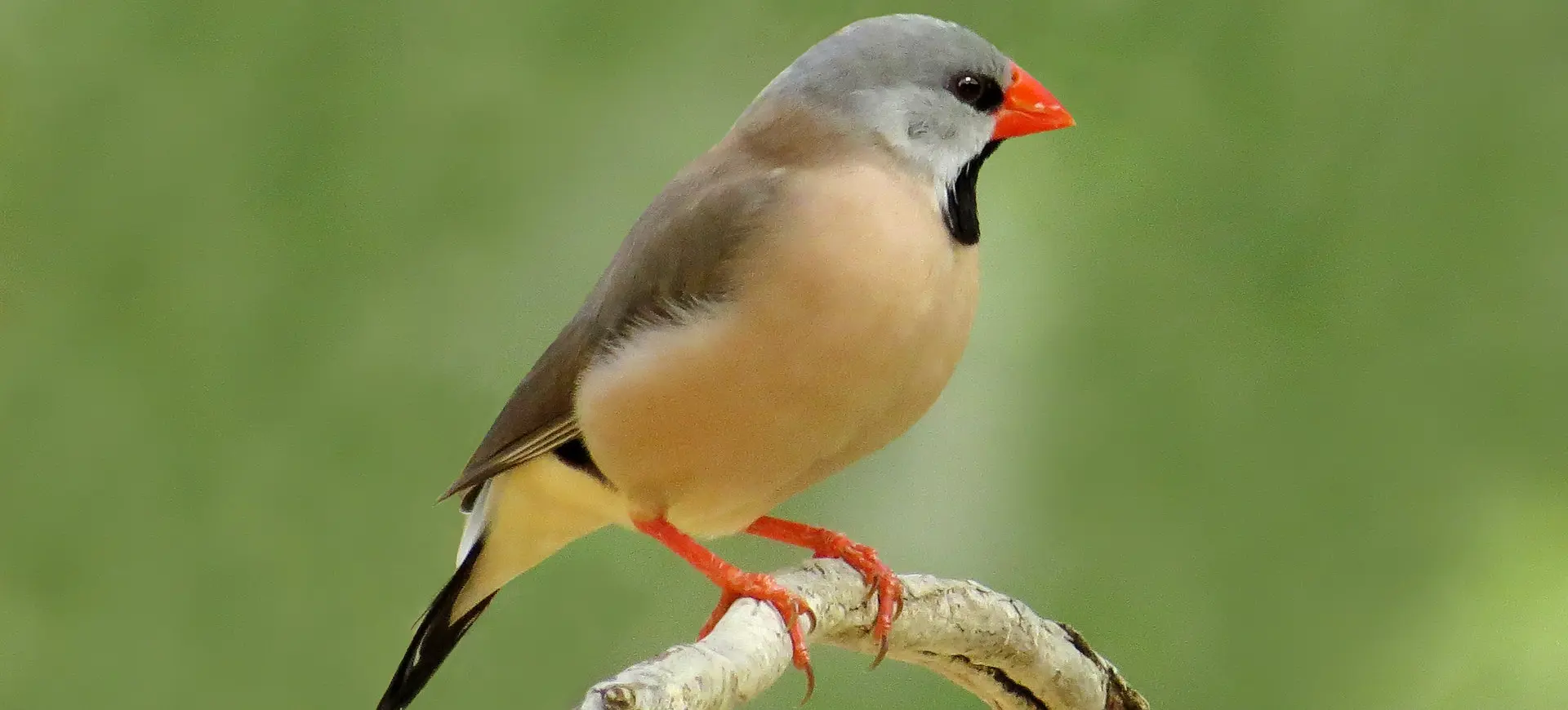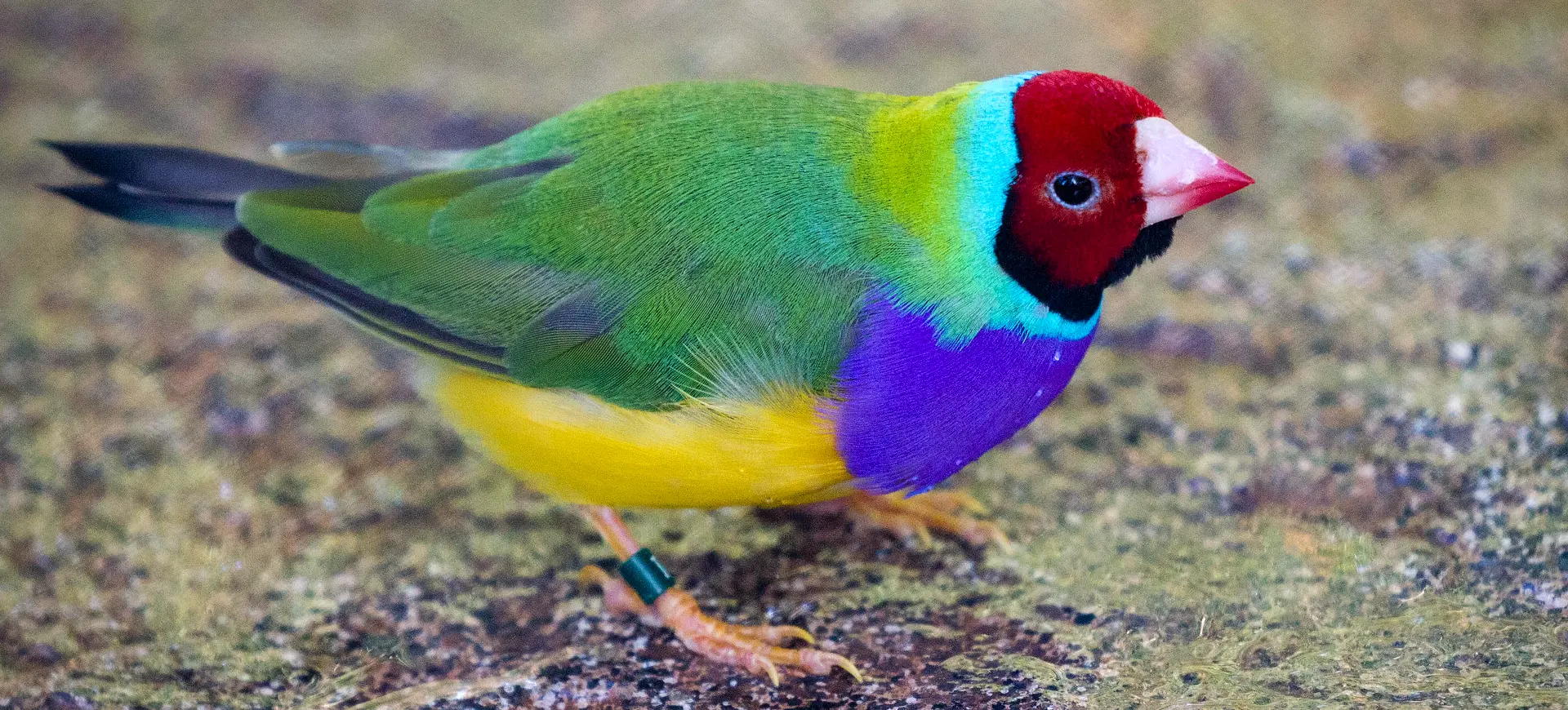Overview
The Diamond Firetail, Stagonopleura guttata, is a striking bird species native to southeastern Australia. It is known for its vivid red bill, eyes, and rump, contrasting beautifully with its black and white spotted flanks and a predominantly grey back. This small finch is one of the most visually appealing birds in its range, making it a favorite among birdwatchers and aviculturists alike. They inhabit a variety of woodland, grassland, and scrubland environments, often seen in small flocks foraging on the ground for seeds, which constitute the bulk of their diet. The Diamond Firetail is a resilient bird that adapts to various habitats if it provides adequate food sources and nesting sites, such as dense shrubs or trees.
Diamond Firetails have a distinctive nesting behavior, often utilizing the nests of other birds or constructing their own in the forks of trees or shrubs, using grasses lined with feathers. These birds are known for their strong pair bonds, typically remaining monogamous throughout the breeding season, during which they can produce multiple clutches if conditions are favorable. Their vocalizations are a series of soft chirps and whistles, communicating between mates and within flocks. Despite their resilience, Diamond Firetails face habitat loss and degradation threats, making conservation efforts vital for survival in the wild.
The conservation status of the Diamond Firetail is a concern, as their populations have experienced declines due to various factors, including land clearing, grazing, and the introduction of invasive species that compete for food and nesting sites. These finches are adaptable, however, and can survive in modified landscapes if key habitat features are preserved. Efforts to conserve their natural habitats are crucial, involving protecting woodland and grassland areas from excessive development and degradation. Public awareness and involvement in conservation practices are also important to ensure the Diamond Firetail remains a vibrant part of Australia’s avian diversity.
Taxonomy
Kingdom
Phylum
Class
Order
Family
Genus
Species
Type
Physical Description:
The Diamond Firetail is a small bird, typically measuring around 12 to 15 centimeters in length, with a distinctive appearance that makes it easily identifiable. A vivid red rump complements its bright red bill and eye ring, while the body is primarily grey, with white spots on the black flanks creating a diamond pattern that inspires its common name. The wings are dark, and the tail is relatively long and square, adding to its elegant silhouette. Both males and females exhibit similar plumage, though males may display slightly more vibrant colors, especially during the breeding season.
Juveniles are less colorful than adults, with more subdued markings and a black rather than red bill, gradually acquiring their full adult plumage as they mature. This species is admired for its beauty and the contrast of its plumage, which is attractive and serves as a visual signal for communication and mate selection. Their robust build and strong legs are well-suited to their ground-foraging lifestyle, searching for seeds and insects. Despite their small size, Diamond Firetails are hardy birds, capable of surviving in Australia’s variable climates as long as their habitat provides the necessary resources.

Lifespan: Wild: ~5 years || Captivity: ~8 years

Weight: Male & Female: 0.6-0.8 oz (17-23 g)

Length: Male & Female: 4.7-5.9 inches (12-15 cm)

Wingspan: Male & Female: 5-6 inches (13-17 cm)

Top Speed: Unknown
Characteristic:
Native Habitat:
The Diamond Firetail is native to southeastern Australia, where it prefers various habitats, including eucalyptus woodlands, grasslands, and scrublands. These environments provide the necessary resources, such as food, water, and nesting sites, crucial for its survival. It is particularly fond of areas with a mix of open spaces foraging and dense vegetation for shelter and nesting. Its presence in a habitat often indicates the area’s ecological health, as it requires a balanced ecosystem to thrive.
Their natural habitats are characterized by the availability of seed-bearing grasses and shrubs, which are essential for their diet and nesting material. The Diamond Firetail adapts well to changes in its environment as long as the key components of its habitat are preserved. However, the fragmentation and degradation of these habitats pose significant challenges to their survival. Conservation efforts aimed at protecting and restoring these natural environments are essential for the long-term viability of Diamond Firetail populations.
Climate Zones:
Biomes:
Biogeographical Realms:
Continents:
Countries:
Diet:
Diet & Feeding Habits:
Diamond Firetails are primarily granivorous, eating seeds from native grasses and occasionally cultivated crops. They forage on the ground in small flocks, using their strong beaks to crack open seeds, which provides the bulk of their nutritional needs. During the breeding season, they also consume insects, providing them with additional protein necessary for egg production and the feeding of their chicks. They require access to water for drinking, which influences their distribution within their habitat.
Their feeding behavior highlights their role in the ecosystem as seed dispersers, contributing to the health of their habitats. Diamond Firetails have adapted to forage efficiently, often visiting bird feeders in areas where their natural habitats overlap with human settlements. This adaptability has allowed them to survive where their traditional food sources have become scarce. Conservation of their natural habitats, including preserving native grasslands, is crucial for maintaining healthy populations of this species.
Mating Behavior:
Mating Description:
Diamond Firetails are monogamous, forming strong pair bonds that often last for several breeding seasons. Their courtship displays include the male dancing with a grass stem in his beak, presenting it to the female as part of the mating ritual. They exhibit high fidelity to their nesting sites, often returning to the same location year after year to breed. The nest is a large, dome-shaped structure constructed from grasses and lined with feathers in a tree or shrub.
The female typically lays 4 to 6 eggs per clutch, which are incubated by both parents, reflecting their cooperative approach to reproduction. The chicks hatch after about two weeks, and both parents are involved in feeding and caring for them until they are ready to fledge. This shared parental responsibility ensures a higher survival rate for the offspring. The ability to produce multiple clutches in a good season allows Diamond Firetails to quickly replenish their numbers, contributing to the resilience of their populations.
Reproduction Season:
Birth Type:
Pregnancy Duration:
Female Name:
Male Name:
Baby Name:
Social Structure Description:
Diamond Firetails are social birds, often forming small flocks outside the breeding season, which provides safety in numbers and increases foraging efficiency. During the breeding season, they become more territorial, with pairs focusing on nesting and raising their young. Their strong pair bonds and cooperative breeding behavior are key aspects of their social structure, enhancing their ability to survive and reproduce successfully.
The interaction between individuals within flocks and between mates involves a complex system of vocalizations and body language. These social interactions play a crucial role in maintaining the cohesion of the flock and facilitating successful breeding. The Diamond Firetail’s social behavior is fascinating from a behavioral perspective and important for their survival, highlighting the significance of social bonds in the animal kingdom.
Groups:
Conservation Status:
Population Trend:
The Diamond Firetail is classified as Near Threatened due to habitat loss, fragmentation, and degradation impacting their natural environments. Their populations are believed to be decreasing, with the primary threats including land clearing for agriculture, urban development, and the competition for nesting sites with introduced species. While they are adaptable and can survive in modified landscapes, the loss of native grasslands and woodlands poses a significant threat to their survival.
Conservation efforts are focused on habitat protection and restoration, aiming to reverse the decline in suitable habitats. Research into their breeding habits, diet, and habitat requirements is essential for developing effective conservation strategies. Public awareness and involvement in conservation initiatives can also play a crucial role in protecting the Diamond Firetail and its habitat, ensuring this beautiful bird remains a part of Australia’s avian diversity.
Population Threats:
The main threats to the Diamond Firetail include habitat destruction and degradation, primarily due to agricultural expansion, urban development, and the mismanagement of fire regimes. Another significant challenge is introducing invasive plant species that alter the composition of native grasslands and compete for resources. Predation by introduced species, such as cats, and competition for nesting sites with more aggressive birds also contribute to their decline.
Addressing these threats requires a comprehensive approach that includes habitat conservation, the control of invasive species, and the management of fire regimes to maintain the ecological balance of their habitats. Public education and the promotion of wildlife-friendly farming and urban development practices are also important for mitigating the impact of human activities on Diamond Firetail populations and their natural environments.
Conservation Efforts:
Conservation efforts for the Diamond Firetail include habitat protection and restoration projects aimed at preserving and enhancing the quality of their natural environments. Initiatives such as replanting native vegetation, controlling invasive species, and protecting key breeding and foraging areas are critical for their survival. Establishing protected areas and implementing land management practices that benefit a range of native species can also contribute to the conservation of this finch.
Engagement with local communities, landowners, and policymakers is essential to ensure the success of conservation measures. Educational programs that raise awareness about the importance of biodiversity and the specific needs of the Diamond Firetail can foster support for conservation initiatives. By working together, we can ensure that the Diamond Firetail continues to thrive in Australia’s unique landscapes.
Additional Resources:
Fun Facts
- The Diamond Firetail’s red bill and rump make it one of Australia’s most easily recognizable finches.
- They are known to reuse and refurbish old nests, both their own and those of other bird species.
- In courtship, males display a unique behavior by holding a piece of grass or twig and hopping towards the female.
- Diamond Firetails have been observed to bathe in dust, which helps to maintain their plumage.
- They can mimic the calls of other bird species, which is intriguing and unusual in finches.
- Despite their small size, they are robust and capable of surviving extreme weather conditions, from hot summers to cold winters.
- The Diamond Firetail is featured in indigenous Australian art and folklore, highlighting its cultural significance.
- Conservation efforts for the Diamond Firetail benefit other species that share their habitats, demonstrating the interconnectedness of ecosystem health and biodiversity.




